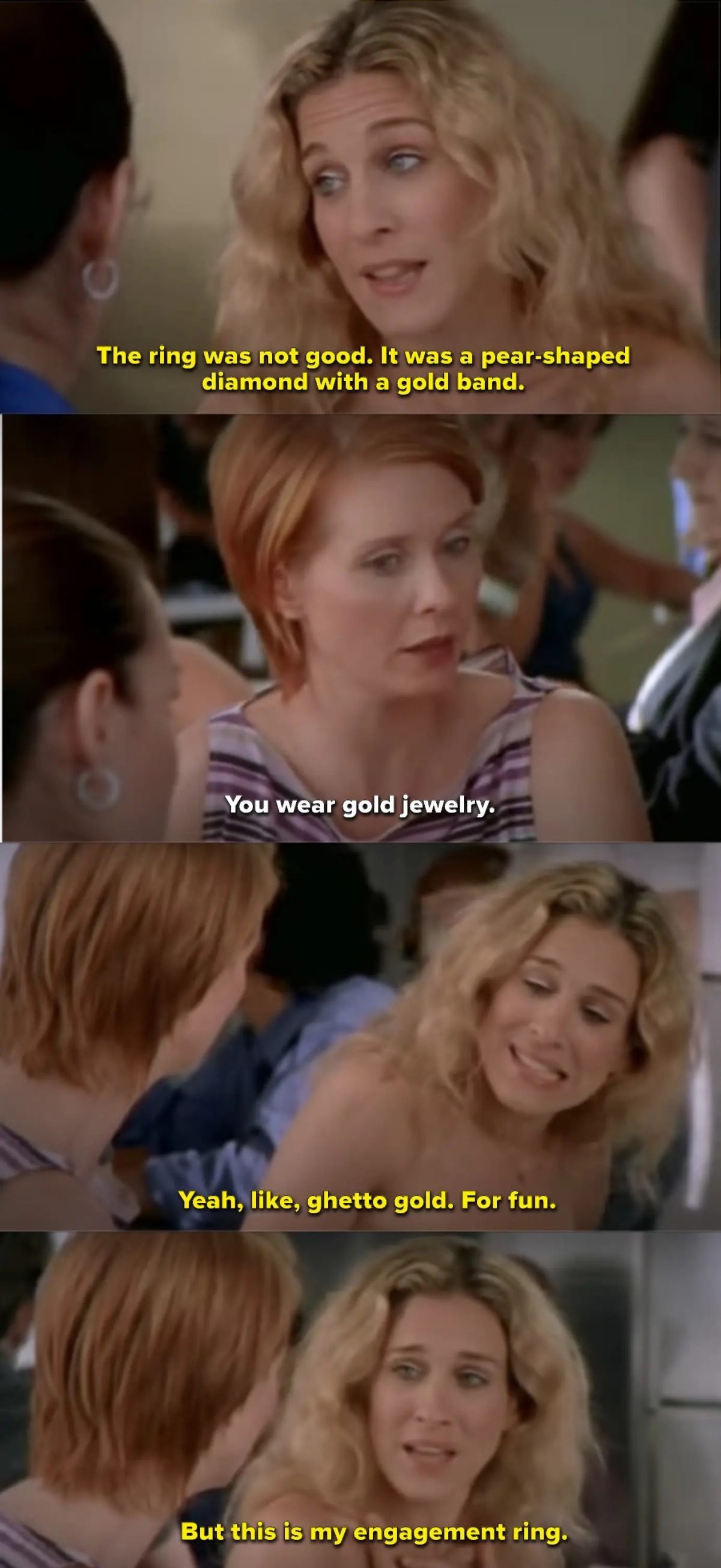Don't Call it "Ghetto Gold"
We all know the now infamous clip from Sex and the City where Carrie says “Yeah, like Ghetto gold for fun” as a response to Miranda reminding Carrie of her love of gold accessories, good enough to wear with a tube top but apparently not good enough for her engagement ring.
 Source: Buzzfeed
Source: Buzzfeed
At the time what seemed to be an innocuous comment, the stigma around gold jewelry and culture holds a lot of weight, and we ain’t talking karats.
Cultural appropriation around gold culture has been around for decades, starting way before Carrie Bradshaw's nameplate necklace. Door knocker earrings and gold cuban links have been looked down by mainstream culture until fashion seems to pick a piece up, slap it on a model and all of a sudden it is culturally acceptable. But long before we fumbled the ball with understanding the value of gold regardless of the way we choose to wear it – Gold has a history as early as the ancient Egyptians.
Pharaohs and officials in ancient Egypt used inscribed gold signet rings as a way to sign documents they even believed that it warned off evil In the late 19th and early 20th centuries, Victorian women in England wore silver and gold brooches with their names carved in them – and classic Hawaiian heirlooms started to include name-branded gold bracelets at the turn of the 20th century.

Gold and hip hop culture also go hand in hand. Gold first made its way and subsequently found its place in the Hip Hop world back in the 80s by the iconic group called RUN DMC. This introduction was soon followed and popularized by Slick Rick, Big Daddy Kane, Rakim – the list goes on and on.
 Source: Input Magazine
Source: Input Magazine
From Jesus pieces to gold grills and even to engagement rings, we love it all and gold will continue to be a classic, never a trend.
